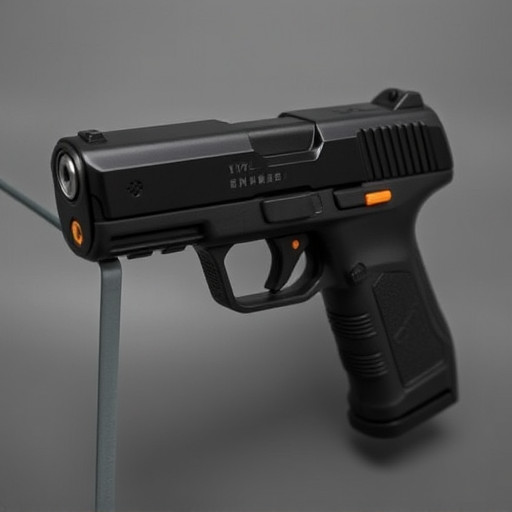Stun guns, or electronic control devices (ECDs), come in various forms and features tailored to different needs—from self-defense to law enforcement. Their chemical composition is crucial for energy delivery and effectiveness, with common formulas including high-voltage, low-current electric pulses. Integrated flashlights are a popular feature, offering versatility and ease of use during low-light conditions without adding bulk. Understanding these types of stun guns and their unique benefits is key to choosing the right device based on specific requirements.
In today’s world, personal safety is paramount. Among self-defense tools, stun guns with integrated flashlights offer enhanced visibility and targeting during low-light conditions, making them a versatile option for diverse scenarios. This article delves into the various types of stun guns, focusing on their chemical composition, voltage levels, and unique features. We explore popular designs, from compact straight models to heavy-duty tactical ones, and guide you through choosing the right stun gun with a flashlight tailored to your needs, considering legal restrictions, budget, and personal preferences.
Types of Stun Guns: An Overview
Stun guns, also known as electronic control devices (ECDs), come in various forms and designs, each offering unique features to suit different needs. These non-lethal weapons utilize electric current to temporarily disable or stun a target, making them popular choices for self-defense and law enforcement applications. When considering types of stun guns, understanding their differences is essential for making an informed decision based on specific requirements.
The market offers a diverse range of stun guns, from compact and easily concealable models to more powerful options designed for enhanced effectiveness. Some stun guns incorporate flashlights, providing both illumination and a deterrent during low-light or dark situations. Others are equipped with additional features like GPS tracking, alarm systems, or different output voltage settings to ensure versatility and customizable levels of protection.
– Chemical composition and how it affects performance
The chemical composition of a stun gun plays a pivotal role in its performance, particularly regarding energy delivery and effectiveness. Stun guns primarily utilize chemicals that produce an electrical charge when discharged, aiming to disrupt muscle control and cause temporary incapacitation. The most common types employ high-voltage, low-current electric pulses, with specific formulations enhancing the impact.
For instance, some stun guns use a mix of potassium clorate and other oxidizing agents in their projectiles or tips, ensuring a powerful reaction upon contact. This chemical combination is crucial for generating the intense current needed to stun a target, making it an essential consideration when exploring different types of stun guns. The right chemical blend allows for efficient energy transfer, contributing to the device’s overall reliability and safety.
– Different voltage levels and their impact on immobilization
Stun guns, also known as electronic control devices (ECDs), come in various forms and configurations, each with distinct voltage levels designed for specific purposes. The impact of these voltage levels on immobilization is significant; higher voltages typically result in faster and more effective incapacitation. Stun guns with higher voltage outputs (over 12,000 volts) are often considered more powerful and suitable for self-defense against larger or more aggressive assailants. These devices deliver a strong electric shock that can cause the target to experience muscle contractions, disorientation, and temporary paralysis, allowing the user time to escape or subdue their attacker.
Different types of stun guns with flashlights cater to diverse needs, from personal security for individuals living in high-crime areas to law enforcement officers requiring advanced tools. The voltage level is a critical factor when choosing a stun gun; lower voltages (around 5,000-12,000 volts) are generally sufficient for non-lethal self-defense against smaller threats or to temporarily disable an attacker without causing permanent harm. The effectiveness of these devices lies not only in their voltage but also in the design and delivery mechanism of the electric current, ensuring that users have a reliable means of protection in various situations.
Stun Guns with Integrated Flashlights: Features and Benefits
Stun guns with integrated flashlights offer a convenient and versatile option for those seeking self-defense tools. These devices combine two essential features into one compact unit, providing users with an added layer of safety in low-light or dark environments. The flashlight function is typically powered by the stun gun’s battery, ensuring you’re always prepared when facing unexpected situations.
One of the primary benefits of these combined devices is their ease of use. With a simple switch, users can transition from illuminating their surroundings to delivering a powerful stun, allowing for quick and effective protection. Moreover, the integrated design streamlines the user experience, making it easier to carry and operate during emergencies, as both tools serve dual purposes without adding significant bulk or weight.
